People
VECO’s Dedication to Enhancing Cebuano Lives
As Cebu’s largest power provider, VECO emerges from its storied history to continue serving the people that matter most—the consumers.
There are few companies in Cebu whose business is as intertwined with everyday Cebuano life quite like VECO. From turning on your coffeemaker upon waking up in the morning to keeping the lights on while working at night, theirs is an outfit operating constantly in the background, providing what some may argue is one of the most basic modern necessities.
It seems funny to recall that, decades ago, VECO had to spearhead initiatives to get people to use electricity. “The company had an appliance store called VESCO, or the Visayan Electric Supply Company, just so people would buy all these things that they could use electricity for,” shares Arlo Sarmiento, who works with VECO’s parent company, Vivant Corporation, as its Executive Vice-President and Chief Operations Officer.

These days, though, it’s a completely different story. VECO now distributes an average of 240-megawatt hours of electricity every month to cover a franchise area of 674 square kilometers, an area that includes Cebu’s major cities and municipalities—Cebu City, Mandaue, Talisay, Naga, Lilo-an, Consolacion, Minglanilla and San Fernando. “There’s a lot of passion and a lot of pride,” says VECO’s Chief Operations Officer Anton Perdices. “Everyone walks in feeling pretty good that they’re working for VECO, knowing they’re responsible for over two million people’s lives.”
A HISTORY American engineers Martin Levering, Albert Bryan, R.R. Landon and A.A. Addenbrook had established Cebu’s first electric company—then Bryan and Landon Electricity—in 1905, covering a franchise that included Cebu, Dumaguete and Dipolog. Later on in the 1910s, the Escaño family acquired the company and renamed it Visayan Electric Company.

“Both parent companies [Vivant and Aboitiz Power] are committed to the industry long-term. With that kind of mindset and shared philosophy, I can’t see how things in VECO would have to change.”
-Anton Perdices
Not long after the Escaños had bought in, the Aboitiz family had also acquired shares and had since been on the VECO board. The two families already had some close ties—they had ran a shipping company together called La Naviera Filipina, before the war had broken it up into each family’s individual businesses, namely Aboitiz Shipping and Escaño Lines.

The close ties between the Escaños, with their extended family the Garcias, and the Aboitizes continued on throughout VECO’s history, but the bigger change would come later, gaining traction in the late 90s and coming to fore by 2004.
THE SHIFT The shift into co-management had been, according to Arlo, a long time coming. “It was something that was discussed over the years until it ultimately happened,” he shares, noting that both families had regular discussions during board meetings.

The timing was certainly right—the Electric Power Industry Reform Act (EPIRA) had just been passed, allowing utility providers to source from independent power suppliers outside of the National Power Corporation (NAPOCOR). “The industry was changing dramatically, so it was really a good time to update VECO as well,” Arlo adds.
When the time came for change, the Garcias had felt that bringing in the Aboitiz family was the natural choice. At the time, the Aboitizes were also running their other distribution utilities Davao and Cotabato Light. “We saw how their culture made those utilities excel more than VECO, so it just made a lot of sense. We thought, let’s adapt this culture,” Arlo says.

As someone who had joined the company during the transition, Arlo himself had experienced the shift in operations. “The culture that VECO had prior to that was a very old one. It was a family-run, patriarchal type of business,” he shares. “But the board, which had been pretty much controlled by the Escaños and the Garcias, believed that a change had to happen, and the Aboitizes brought in a professionalized corporate culture.”
The transition happened in 2004, under Dennis Garcia’s term as President as the first Aboitiz COO and Executive Vice-President. It was then that Arlo joined the company’s utility economics department, the group that takes care of power supply arrangements, purchases the power and reports to the Energy Regulatory Commission. Alfonso’s brother Jimmy came in as Vice President for Engineering, but later took over as COO in 2007.
When Jimmy took over as President in 2014, he had decided to bring in Anton Perdices, who at the time was working in the company’s construction arm. “He came up to me one day and said, I have a job offer for you, and I know you’re gonna like it,” Anton recalls.
When Jimmy had informed the Garcias on the board, it was welcome news. Now, Arlo and Anton, along with Jimmy and Vice-President Emil Garcia, are the family members who serve as VECO officers, with the rest serving at a board level. “Anton pretty much runs the show,” Arlo adds with a laugh.
“But we’re always talking,” Anton replies. “That’s another thing that makes the partnership work—everyone is aware of what’s going on. The families have known each other for so long, so it wasn’t as big of an adjustment. There’s a similar mindset, similar attitude, similar sense of humor. Similar everything.”
IN THE FUTURE Much like any other industry, the business of distributing electricity is one that is constantly evolving. Several pieces of legislation, as well as projects VECO is spearheading itself, mean there will soon be plenty of changes in the market, some of which we’ll be seeing in the near future.

• RETAIL COMPETITION AND OPEN ACCESS (RCOA) This gives consumers the opportunity to purchase their electricity from their preferred supplier. “It’s kind of like the telecommunications industry, where you as a customer ca n choose Globe, Smart or Sun,” Anton explains. “Eventually you can pick where you buy your power, so that will bring competition and eventually drive prices down. There’s going to be all kinds of plans—like if you lock in a contract for three years, this is how much your rate is going to be; if it’s a year, then you will be paying this. There’ll be post-paid and pre-paid plans.”
Eventually, VECO will be relegated to the wires and poles business. Arlo explains, “It’s like a highway: you choose the car, but you pass through the highway—in this case, it’s the wires and poles—and we collect toll fees.”
And apparently, this is all happening soon. Customers with a consumption of one megawatt and above will enjoy the power of choice by February 26, and by June, those who consume 750 kilowatt and above can do the same. “They’re also going to aggregate customer accounts, like in Maria Luisa, for example,” Anton explains. “They can get together as a group, pool their demand, and pick the supplier they want.”
• RENEWABLE ENERGY LAW One of the provisions of this legislation, the Renewable Portfolio Standard dictates that utilities distributions need to purchase a percentage of their supply from renewable sources, with the percentage growing every year.
Currently, VECO already sources 50% of their power from renewable sources, and consumers also have the option to use their own. “Basically if you have solar panels, the electricity you don’t use, you send back to the grid and VECO buys it from you,” Anton explains.
• UNDERGROUND WIRING “What we’re doing now is having them study where it would make the most impact,” Anton explains about VECO’s current plans of moving existing electrical wires underground. One of their major concerns is typhoon resilience, which is why areas like Banilad, where there are a lot of trees, are likely candidates.
With electrical lines moving underground, VECO hopes other utilities like telephone and cable will follow suit.
TECHNOLOGY UPDATES Of course, there are a lot more changes than the consumers realize. “There’s a story about Alexander Graham Bell and Thomas Edison,” Anton shares, narrating how the two would react to how their inventions have evolved through the years. Alexander Graham Bell would be surprised at how much the telephone has changed, with the emergence of mobile and smart phones, while Thomas Edison would find electricity work basically the same way. “But behind the scenes, it’s completely different. Our system operations department, the way we do things, it’s all electronic.”
The updated system has allowed VECO to more effectively source power, and to do so with more foresight. In fact, a process that previously required someone to study power supply and compute future demand can now be performed by a computer system. “It was developed by an Iranian mathematician,” Anton explains. “We have different suppliers who have different prices. This system would take that information, run the math and come up with the best mix—which supplier would be best for this time.”
Although these technicalities may not be something customers themselves would be able to identify, the result affects homeowners in the long run. Being able to source the best and cheapest supply at a given hour will bring down the cost of electricity, which will in turn bring down electric bills.
At the heart of it all, VECO is about the people they serve. The company is continuously looking for ways to give their customers more value for money. “We’re serving the second biggest city in the country,” Anton says. “With that comes tremendous growth, and balancing supply with trying to get the lowest price for our customers is always a concern. It’s also important to keep customer service at a level where they are satisfied. It’s a real challenge. We are growing so fast as a franchise, and customer service is always a concern.”
With this imminent growth on the horizon, both families are confident that having their partnership in place is what’s going to continue bringing their success into the future. “Both parent companies are committed to the industry long term,” Anton shares. “Aboitiz Power is in it for the long haul, and with that kind of mindset and shared philosophy, I can’t see how things in VECO would have to change.”
“I really don’t foresee any changes,” Arlo agrees, pointing out the achievements that both companies were able to achieve together. “I think right now, it’s a case of, if it’s not broken, don’t fix it.”
People
A Destination Wedding in Capiz; A Love Story in Focus

by Oj Hofer | photography by Pat Dy | styling by Romero Vergara | bridal gown & groom’s tuxedo by Oj Hofer
As June draws to a close—a month filled with vows, veils, and wedding bliss—it’s only fitting to end with a love story that began not in a chapel, but behind the lens of a camera. Meet the groom, Phillip Novo: a seasoned maritime officer commanding international vessels by profession, and a passionate hobbyist photographer in his downtime. Mr. Novo has captured countless scenes from around the world, but nothing compares to his candid portraiture study of the woman he would soon marry—Mitch Alianza—in a heartfelt ceremony at the Sacred Heart of Jesus in Roxas City, Capiz.

Philip keeps it classic in sun-washed Seychelles beige linen.

Mitch channels Persephone in a gown that blossoms with spring’s charm
Capiz became the couple’s destination of choice as an homage to the bride, who hails from the province. Historically, Capiz was the second Spanish settlement established in the Philippines. With its 80-kilometer coastline and a mesmerizing stretch of rivers and swamplands, the province offered a natural allure to the wedding party. Yet for the groom, it was more than scenery—it was about honoring his bride’s heritage and heart.
Their love story spans continents, email inboxes, and a few overpacked pieces of luggage. Phillip recalls their serendipitous encounter involving jumpsuits, hot air balloons, and the rhythm of a life lived in sync.

The Sacred Heart Shrine in Capiz, transformed into a lush tropical dreamscape.

Wicker baskets, solihiya chairs, and cascading greens brought understated elegance to the naturalistic reception at Istorya Forest Garden.
How did you meet Mitch?
Right after covering a friend’s wedding. I spotted her navigating the space with this quiet confidence. We didn’t even speak—just exchanged a look. Later came a few messages, a first date, and her walking toward me in a black jumpsuit. That moment? Unforgettable. I thought, “Ka-Vogue!”
When did you know she was the one?
Honestly, from the start. I had just closed a big chapter of my life—career goals, family responsibilities—and when I held her hand for the first time, I didn’t want to let go. Everything just aligned.
You proposed in Turkey—why there?
Cappadocia. Picture it: fairy chimneys, floating hot air balloons, and this surreal landscape. It felt like a dream, and in that dream, I asked her to marry me.
Who plans your trips—beach bum or mountain guy?
I map out the adventures, and Mitch plans what we wear on them. She packs only what fits and flatters—and trust me, she always looks like she stepped out of a fashion editorial. Our luggage deserves its own Instagram.
If you had 10,000 lives, would you marry her each time?
Every single time. Even if we met in another galaxy.
What’s one quirky thing you love about her?
She’s endlessly resourceful. Whether it’s an outfit or a life goal, Mitch can pull it together like no one else. She’s sharp, creative, and once she sets her mind on something, there’s no stopping her.
What’s your message to Mitch as you set off on this next big adventure together?
Hi, Love—keep holding my hand. No matter how the winds blow, let’s keep making memories, telling stories, and seeing the world—together.

A Sky Full of Balloons, a Heart Full of Yes — Philip Proposes to Mitch in Magical Cappadocia
People
The Cardinals–an Amazing Gallery of Portraits on Cardinals in the Philippines by Artist Jun Impas

by Jing Ramos
With the recent death of Pope Francis on April 21, the Catholic Church is now focused on the election of the new Pontiff. The succeeding Pope will be challenged with continuing Pope Francis’ appointments and reforms, which leaned heavily on social justice and environmental issues.
According to the Code of Canon Law, the two most important functions of a Cardinal are to advise the Pope on matters of Church governance and global issues, and most importantly, to assume a vital role in electing a new Pope when the Holy See (Sede Vacante) is vacant.
In 6th-century Rome, the first individuals known as Cardinals were the deacons of the seven regions of the city. Since then, Cardinals have become a privileged group among the Roman clergy. It wasn’t until the 11th century that Cardinals were officially granted the right to elect a Pope. They were given the honor of wearing a red hat, which soon became their symbol. Often referred to as “Princes of the Church,” Cardinals wear distinctive red attire and are addressed as “Eminence,” a title that conveys dignity and respect.
Currently, one of the most favored contenders to continue Pope Francis’ progressive agenda is Cardinal Luis Tagle. He brings significant experience as the Pro-Prefect for the Section of the First Dicastery. Also serving as President of the Interdicasterial Commission for Consecrated Religious, Cardinal Tagle is the Grand Chancellor of the Pontifical Urbaniana University. Beyond his titles, he is widely known in the Vatican as a trusted figure within Pope Francis’ core group.

Cardinal Luis Tagle and artist Jun Impas
Jun Impas, a highly respected Cebuano visual artist known for his realistic paintings, shares his gallery of Filipino Cardinals. The artist’s accurate and detailed depictions capture not only the physical likeness but also the presence of his subjects. “As a realistic painter, my works revolve around human figures, religion, significant cultural events, and quintessential Filipino scenes. I believe in the beauty of the ordinary, and that the most touching and telling of any story is better felt when captured in infinite duration, as in a realism painting,” the artist concludes.
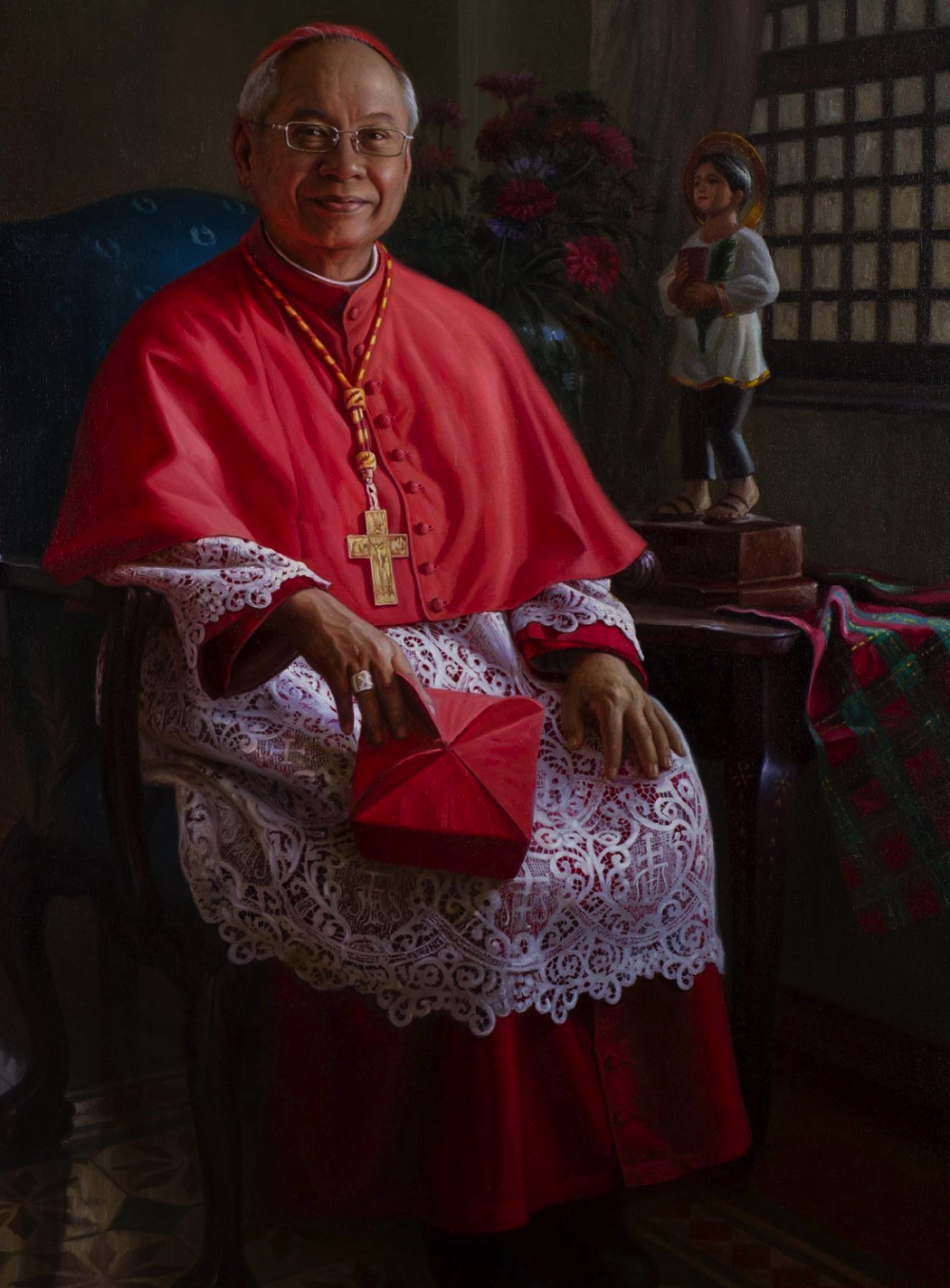
Cardinal Orlando Quevedo
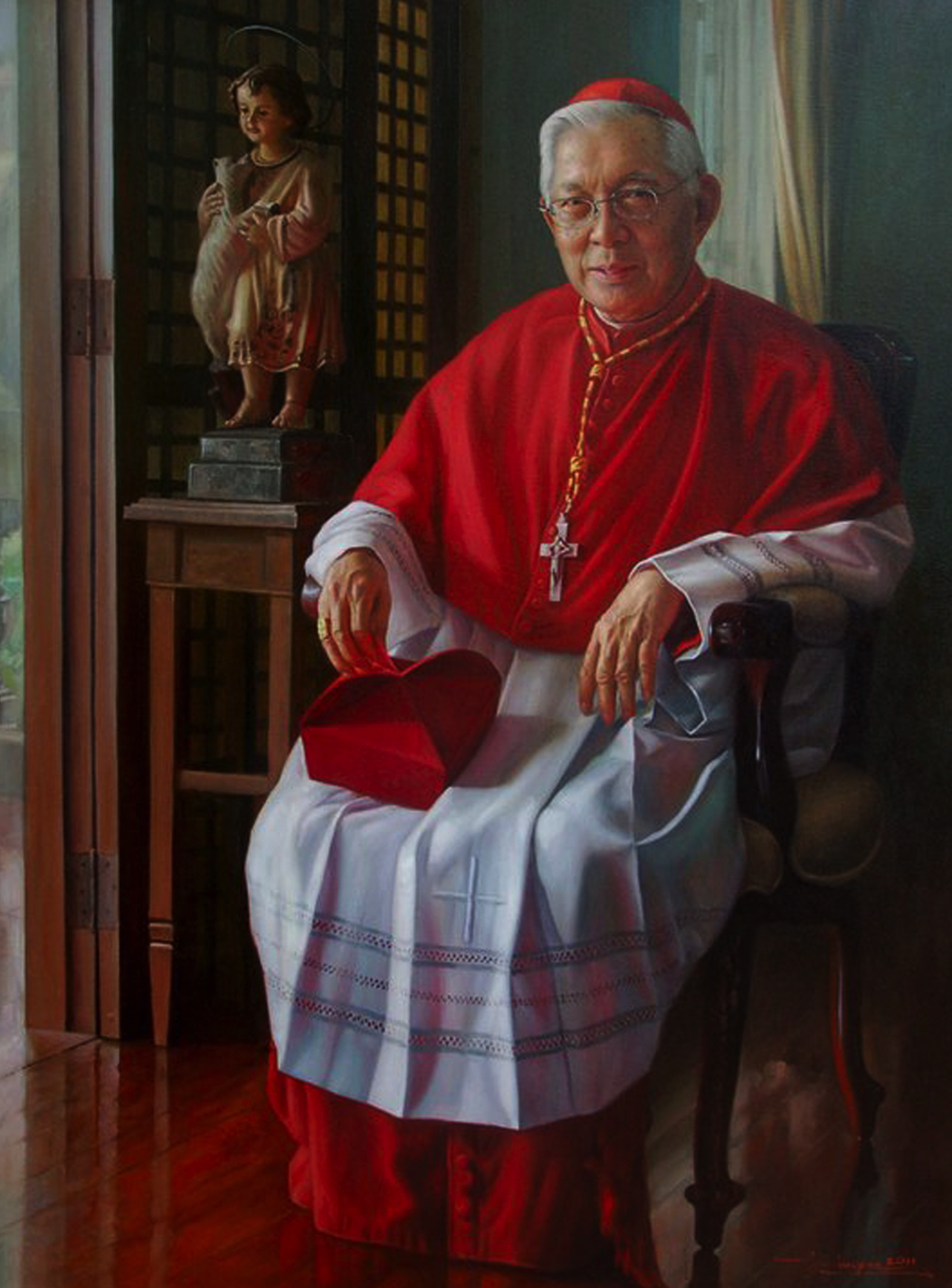
Cardinal Archbishop Emeritus of Manila Gaudencio Borbon Cardinal Rosales
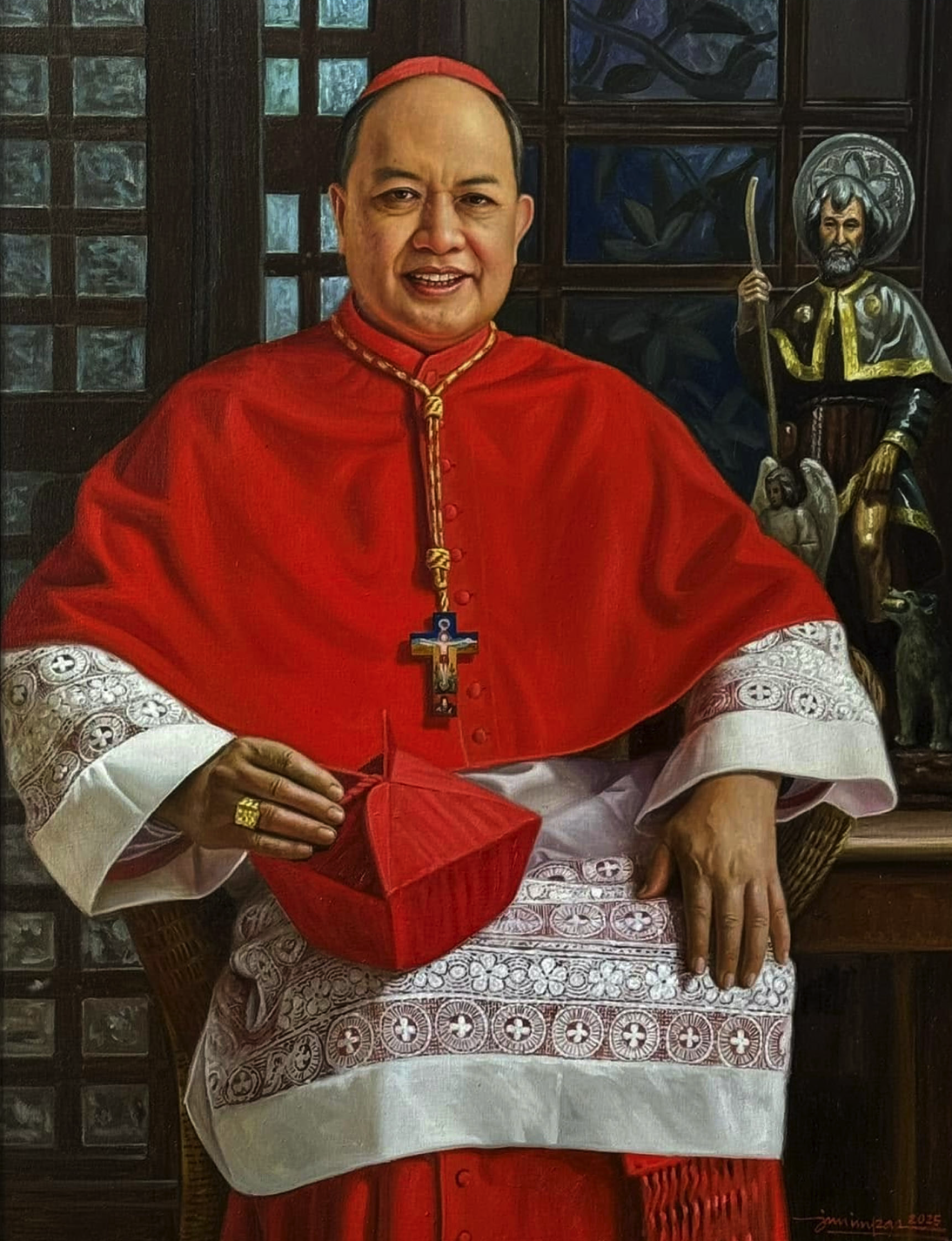
His Eminence Pablo Virgilio David, Cardinal Bishop of Caloocan
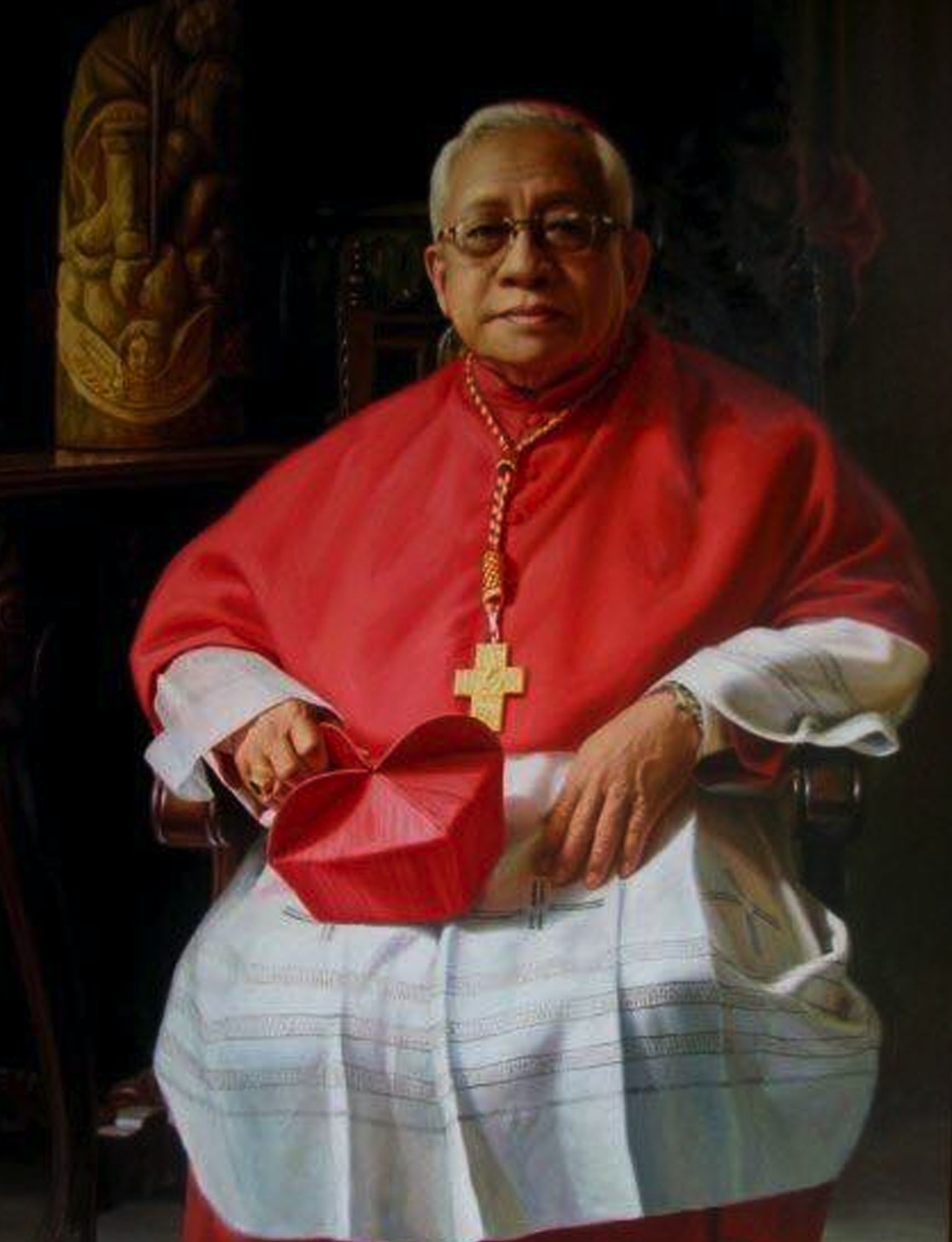
His Eminence Ricardo J. Vidal, Cardinal Archbishop of Cebu
Events
The First NUSTAR BALL

The NUSTAR Ballroom, a magnificent venue at the NUSTAR Resort and Casino in Cebu, sets the stage for last night’s first-ever NUSTAR Ball.

Black was the color of night at the Zee table.
Glamorous guests from Manila and Cebu converged at the NUSTAR Ballroom, an exquisite venue within the NUSTAR Resort and Casino in Cebu. The evening unfolded with a seated 5-course dinner. The opulent feast started with Beetroot Salmon Gravlax, adorned with caper berries, caviar, set with delicate edible flowers; and a main course of Compressed Pork Belly with Crackling Skin and Baby Scallops. Another highlight was the auction of coveted items like Dior and YSL handbags, a limited-edition Bulgari watch, and an exclusive 2-night stay in Nustar’s opulent 3-bedroom villa—complete with a private pool and a dedicated butler. The charity evening benefited the Cameleon Association, an NGO based in Iloilo City created in 1997 that developed a global approach to act on the causes and effects of sexual violence against children.

Nora Sol, Beth Go, Frances Siao and Marylou Ong

Ina Ronquillo, Maryanne Aboitiz and Jackie Lotzof

Designers Jun Escario and Philip Rodriguez

Philip Rodriguez with NUSTAR Malls two power ladies: May Adolfo and Joanna Salazar

Lana Osmeña with Mariquita Yeung

PJ Castillo and Kaye Abad with Cary Santiago

Drew Sarmiento with LV Manager Adrian Decuigan

Cary Santiago with Eva Gullas

Manila socialites Julie Boschi and Ching Cruz with June Alegrado
It was a night of elegance, luxury, and unforgettable memories as ladies in long gowns and gentlemen in black ties danced the night away.
-

 Style1 week ago
Style1 week agoHappy Melendres Traipsing Around Manhattan in Non-Stop Armani
-

 Style2 months ago
Style2 months agoThe Invisible Part of Fashion: Five of the Most Enduring Fragrances of All Times
-
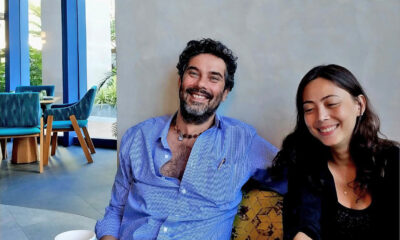
 QuickFx3 months ago
QuickFx3 months agoModern Indian Cuisine; Gagan Sethi and Gwen Trott Spice Things Up at Goa Nights in Cebu
-

 Arts & Culture4 weeks ago
Arts & Culture4 weeks agoKultura. Kapital. Kasalukuyan: Art that Speaks of Today
-
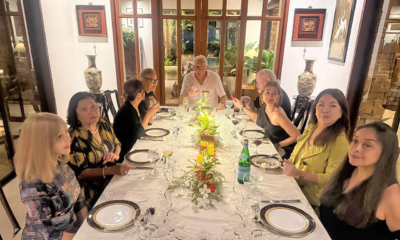
 The Scene3 weeks ago
The Scene3 weeks agoAnother Elegant Dinner at Chez Marguerite
-

 Prime Target3 weeks ago
Prime Target3 weeks agoLuna Vdl–Endless Summers in Siargao
-

 The Scene1 month ago
The Scene1 month agoA Stylish Soirée: Cebu’s Elite Celebrate Jackie Deen Lotzoff at Mad Thai
-

 QuickFx2 weeks ago
QuickFx2 weeks agoI Lost It at the Movies: Five of the Most Significant Films of the 1960s









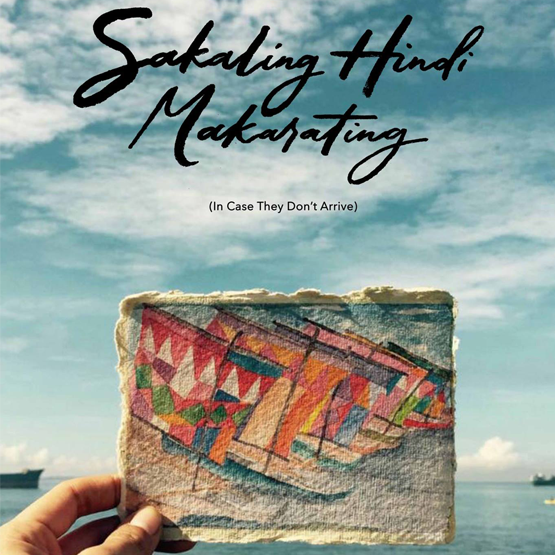





You must be logged in to post a comment Login